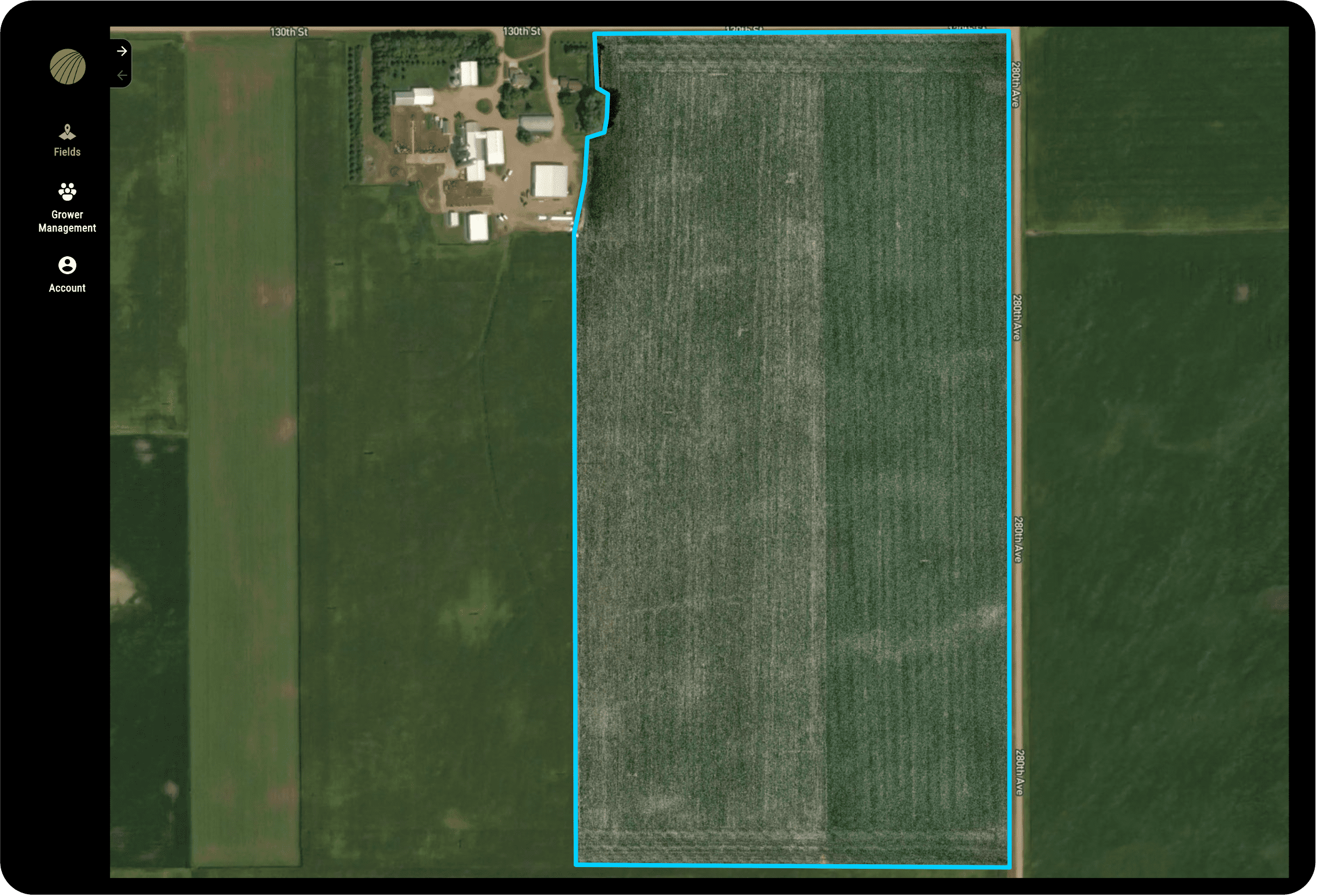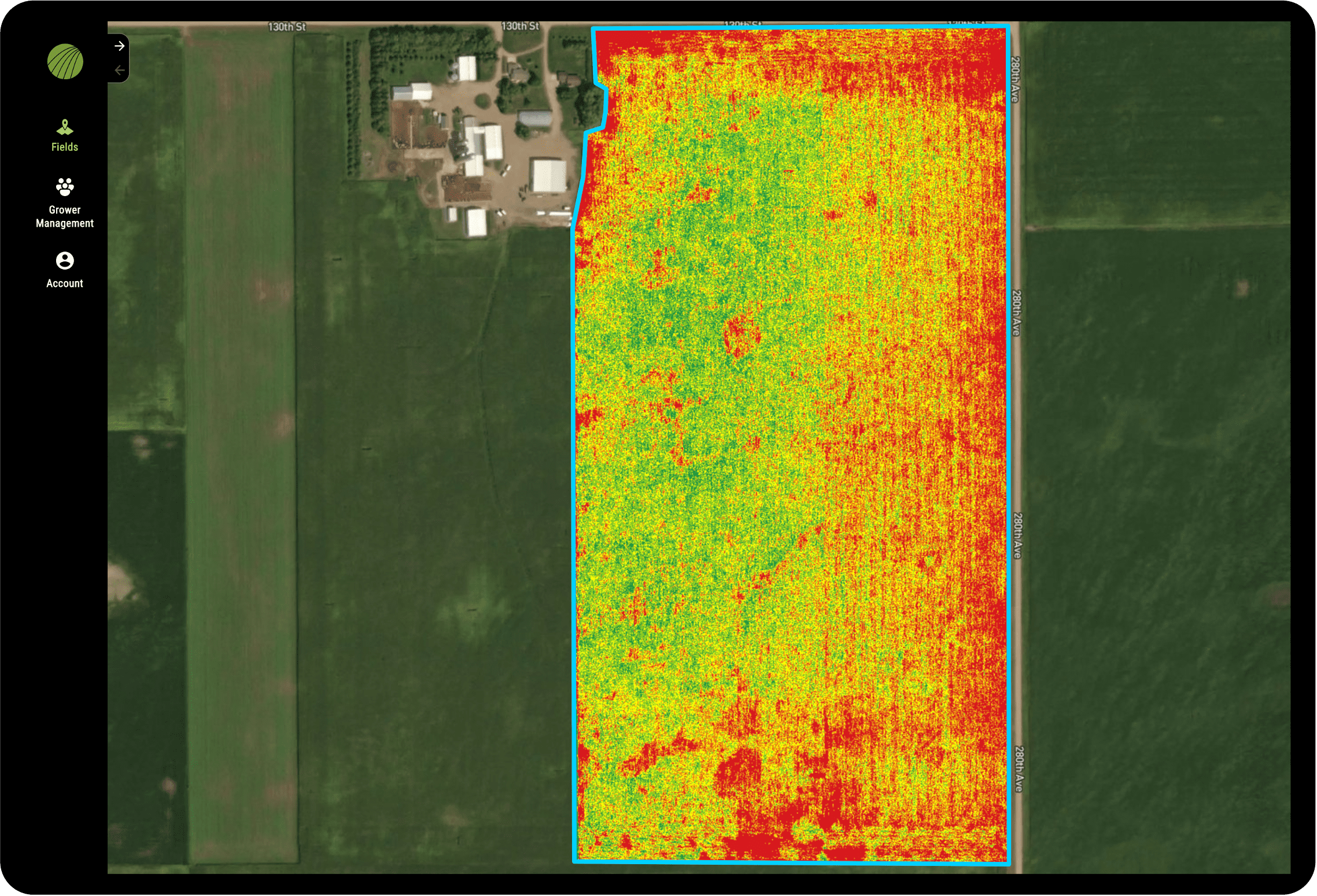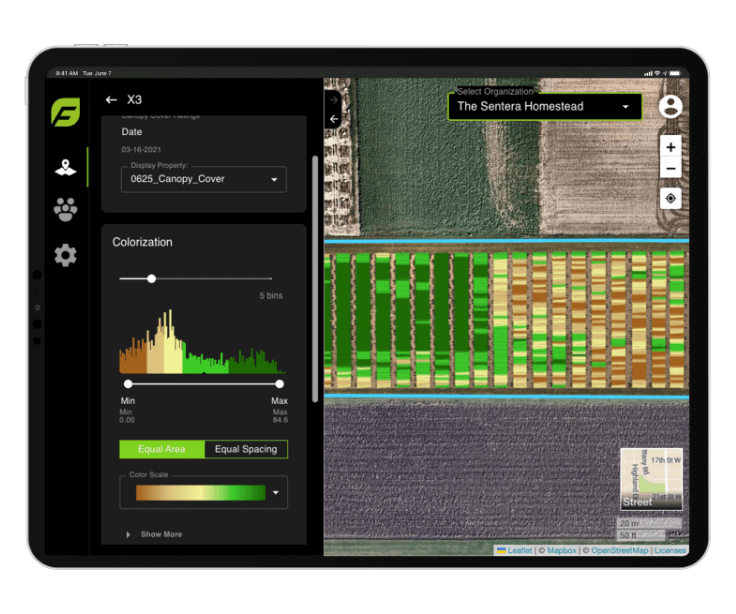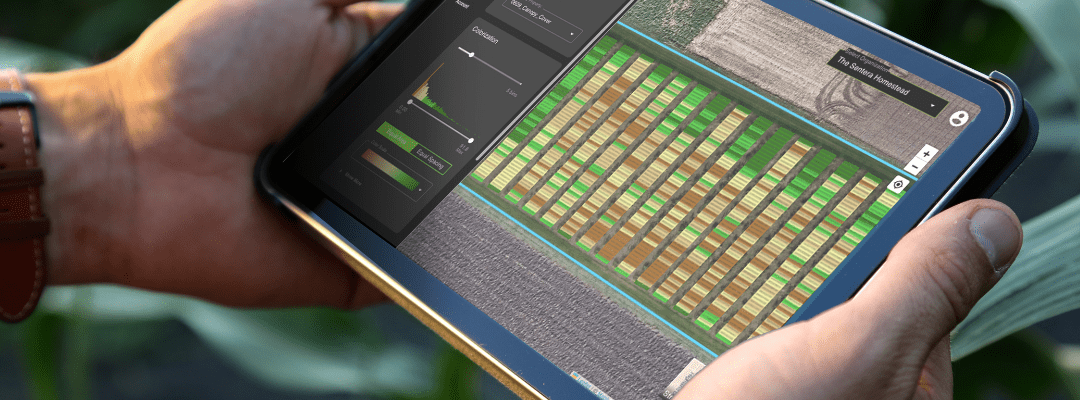Over the course of the last decade and a half, ag drone technology has catapulted into leading the charge for remote sensing capabilities – making it easier to capture more data in less time without sacrificing precision or accuracy.
As this technology has evolved and grown, so has the number of options on the market. This increase has led to confusion – with many wondering which to choose: RGB vs. multispectral?
RGB Sensors: Counting Populations
RGB sensors capture red, green, and blue (hence the RGB) bands. These bands of lights are what the human eye is sensitive to seeing; so when RGB bands are displayed, it produces nearly exactly what our eyes see.
What does this mean? The image you get from an RGB camera will be an image of your field.

Once the overlapping images captured while in the sky are stitched together, a single image – or an orthomosaic map – is created to get an aerial view of what’s happening.
In turn, it provides a view of what’s happening within the field – showing the number of plants that have emerged or matured. Often times, this helps to inform boots-on-the-ground scouting by giving an indication of what’s happening across the field. It makes it easier to pinpoint issues, input the geodata into GPS, and head over to the problem. With limited time and resources, this can help drive efficiency and productivity.
Today’s RGB sensors don’t stop there. They may be enabled with near-infrared (NIR) sensors to capture an additional light band that can’t be seen by the human eye. With the ability to capture NIR, these RGB sensors can now calculate Visible Atmospherically Resistant Index (VARI) to indicate where crops may be stressed or not at optimal health.
With the ability to calculate VARI, it can start to give an indication of crop health. However, it’s important to note that VARI isn’t the most accurate index as it is subject to variables like cloud cover, shading, or variations in sunlight. However, it goes a bit further than a traditional RGB camera by providing insight into plant health.
Multispectral Sensors: Analyzing Health
When it comes to plant health, this is where multispectral sensors really shine. Multispectral sensors go beyond the traditional three bands found within an RGB sensor, and focus on collecting wavelengths of light that are invisible to the human eye. While these sensors are available as modified and multiband, this comparison will focus predominantly on multiband.
Multiband multispectral sensors typically collect anywhere from five to 10 bands of light. The most common bands include those common with RGB sensors. It also includes NIR. But most importantly, it also includes Red Edge. Red Edge is a wavelength of light that fits between the red band and NIR, spanning 670-760 nanometers.
For those in agronomy, the Red Edge gives clear insight into plant health and stress. Many argue that this is the most useful band for agriculture because this is where you can first detect any vegetative stress – helping identify stress as early as possible in the crop growth cycle.
Unlike the RGB sensor which creates a visible map of the field that makes it easy to count the number of plants on the field, multispectral sensors focus on capturing how light is reflecting off the leaves of the crops.

Light will reflect differently depending on how much chlorophyll is in the leaves. And, the amount of chlorophyll gives an indication of how healthy plants are.
The multispectral sensor thus becomes essential to understanding crop health throughout the season. Using key indices like Normalized Difference Vegetation Index (NDVI) and Normalized Difference Red Edge Index (NDRE), multispectral sensors can provide insight into:
- How crops are reacting to key inputs, and thus inform application decisions
- Crop canopy, to help measure growth rates and plant maturity throughout the season
- Plant stress, helping to identify key areas of focus and mitigation strategies
- Soil health with the ability to understand how plants are taking in nutrients
- Drought potential to manage water inputs and create irrigation strategies
RGB vs. Multispectral Sensors: Which One Wins?
Now that we’ve uncovered the differences between RGB vs. multispectral sensors, it’s time to determine which one wins.
And, unfortunately, it depends. (Our favorite response in agriculture, right?)
It depends on what you’re trying to achieve with the ag drone system and how you will be using the data that you collect.
If, for instance, the goal is to understand how a hybrid seed performs from when it’s planted to emergence to mid-season health checks to end-of-season harvest, the best option may be an RGB sensor to get a clear picture of what’s happening within the field throughout the season.
On the other hand, if there’s interest in understanding how soil fertility or key inputs – like fertilizer, herbicide, or fungicide – may perform, using a multiband multispectral sensor may be a better option. Soil fertility and input management rely on understanding how they are impacting plant health throughout different points in the season; and having the ability to track health at the plant level will be imperative to validating outcomes and maximizing performance.
Beyond the maps and imagery that can be created by RGB and multispectral sensors, there is the opportunity to generate detailed analytics and data sets that provide a more detailed view of what’s happening within the field. Sentera’s machine learning platform translates this aerial imagery into detailed data sets.

These analytics, like Stand Count, Canopy Cover, and Tassel Count, provide numerical insight into performance – helping to validate decisions faster and provide comparative data points that can be leveraged throughout the season (and built into historical analyses, too).
To summarize, the RGB vs. multispectral battle will crown a different winner each time, depending on specific needs of the user and program. Understanding what you’re trying to achieve and why will give a good indication of which sensor will work best for you.


